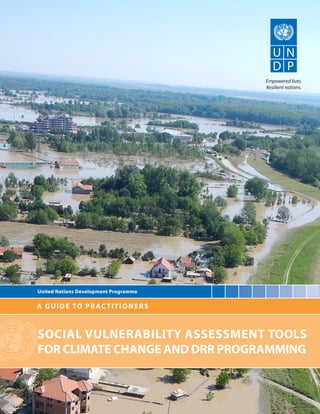This document provides guidance on social vulnerability assessment tools for climate change adaptation and disaster risk reduction programming. It discusses how social vulnerability is an important factor to consider but is often inadequately addressed. The guide aims to help practitioners better plan projects that address social vulnerability. It covers topics such as defining social vulnerability, overview of assessment methodologies globally, case studies, identifying vulnerability indicators, calculating indices, and recommendations. The intended audience is local, national and international practitioners involved in climate change adaptation and disaster risk reduction.















































